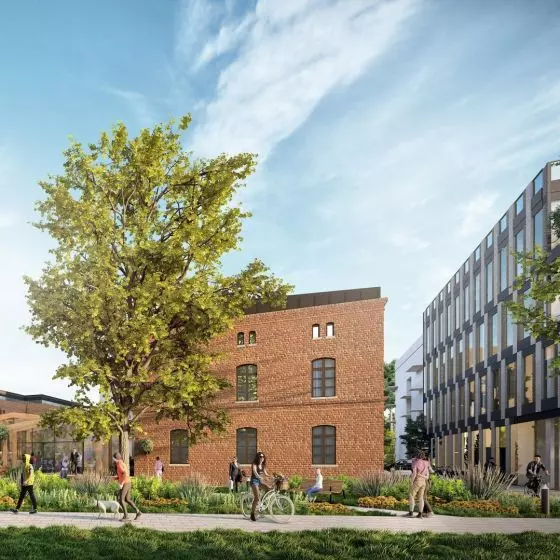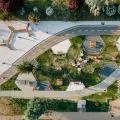The interview from issue 10|22 A&B
Back in 1979, left-wing urban policy researcher Peter Saunders complained that the extent of actual local power in Britain coincides exactly with the formal institutions of local government: „power rests in the magistrate's office... and nowhere else.” But by the 1980s, local authority in the West had already begun to fragment.
Many tasks were delegated to unelected entities. Private and community organizations took on new roles as contractors and partners of local government. The internal organization of government was decentralized and slimmed down. Urban policy researchers and theorists have had to broaden their focus —from the purely formal institutional structures of administration to issues of task sharing, coordination, networks of interaction, urban regimes, social power centers or new forms of public affairs management. The institutions of local administration have not become less necessary because of this, but they must change significantly, adapting to new relationships between actors and to shifts in centers of power.
A similar process is taking place in Poland. More than thirty years after the establishment of local government, an evolution of local authority is taking place in a direction similar to changes in countries where (as in the UK) local government has a history of several hundred years. This similarity is not coincidental. The changes are moving in a direction that is natural for a complex system like a city, with its social capital, space, buildings and infrastructure.
Today, we can put forward a thesis that the process initiated in Poland in the first decade of the 21st century with the implementation of European policies, the process of moving the centers of effective power (not administration!) beyond the offices and institutions of elected local government, is a continuous process of increasing intensity. While the administration continues and becomes more and more efficient in its role as a watchdog of order, and often as a brake, and distributes public funds, the processes that determine change, including economic growth, social trends, and even education or health care, are now located quite far from the magistrate or regional government.
From the above, I derive a thesis: the city is increasingly becoming civic property —the de facto public domain. The city is mine —the city is ours. This not only means citizen aspirations to decide, to take direct power, but also allows us to define the basic criterion for evaluating urban policies: "the city is changing in the right direction if it improves the quality of my life."
From this perspective, the basic intention of modern urban policies should be to equip the city with such procedures and tools of new technologies that will allow to increase the actual influence of citizens in shaping the development of the city and metropolis. This would serve the realization of the values of citizen subjectivity, subsidiarity of power, transparency of procedures and action, responsibility of the "users" of the city for their actions. In the first instance, however, such policies would be in line with the observed, described above, natural trends of decentralization of power.
We can, as stated in the „Roadmap for Smart Solutions in the Krakow Metropolitan Area” created in Krakow, define the city we want to build as: a city that empowers residents to choose and shape spaces for their individual development without losing the harmony of the community; a city where technology serves residents to solve their problems and provides effective support for smart management decisions; a city where residents take increasing responsibility for its resources.
A mechanism for improving the quality of life; a pentagon of participation and self-regulation
© Private Archive
important questions: can the city be designed; who can ensure its sustainability and resilience to change?
Actually, a series of further questions without a clear answer: is sustainable/sustainable urbanization dependent on technology? If so, on which one? Or rather, is it a matter of middle-class lifestyles? Is the over-use of resources by urbanized concentrations of people a matter of the supply side (commercial pressure to „buy and use more"), or rather of the demand side (precisely the lifestyles of the residents)? At the same time, it seems that the "sustainability” of urbanized space is more a matter of conscious use of resources by ordinary people, supported by policymakers and urban policy makers, rather than the introduction of smart technology and the replacement of human decisions with artificial intelligence.
Technology is extremely important. It is a tremendous opportunity to realize the potential of self-organization and self-regulation of city organisms under the dictates of the people who live in them, rather than planning geniuses. It just needs to be placed at the right place in the decision-making chain. Today we no longer believe that smart grids and miracle technology cities like Songdo, Masdar will solve the problems of urbanization. They only solve the problem of increasing the turnover of technology companies.
Since the goal of urban change is to improve the quality of life of the resident, we need to answer the question of who should, or rather, who can take care of it. Can the city —a complex system —be designed effectively at all?
There are extreme approaches to who is the creator of the city, who is its „engineer”; they define completely different roles for the city government. Both extreme approaches do not fit well with modern reality, but with the technical solutions available today, they can be harmonized in a new way. The prerequisite is that actors on the urban scene adopt appropriate new roles.
The first approach, „Corbusierian":
—The city is/should be an engineered product, holistically designed to effectively solve the problems of its inhabitants.
—The will of the designer can be realized at the scale of the city.
—The form of the city, its morphology, can be designed "in advance,” anticipating its development.
The second approach, formulated by Jane Jacobs and social movements in New York in the 1960s:
—The city does not solve problems. The city is an environment that allows or does not allow solving the infinite number of small problems that people living in the city have.
—The city is a complex system. The morphology of a city and its social structure are products of autonomous processes of growth and adaptation to changing human needs and opportunities.
—Cities cannot have effective designers of their future.
Today, these two contrasting approaches can be used harmoniously, building the structures of a resilient, agile, livable city (in English terminology: resilient, agile, livable city).
The social assumption that the starting point, basic value and goal is the quality of life of the individual citizen, and that cities are subject to processes of spontaneous self-organization, does not contradict engineering activities: planning, design, optimization of urban systems. This, however, happens on the condition that we activate and support with technology the functions of an interactive and adaptive city.
As I understand it, an interactive city is one in which residents have great ease in communicating their reports ("a tree broke"), complaints ("there is no water in the tap"), expectations ("we want to breathe clean air") to the administration, services, fellow citizens, experts, and their reports are not lost in non-existence, but become tasks not only for the administration. Tasks whose fate can be tracked like the path of courier shipments, and which get a response. A positive or negative response from various sources. At the same time, these submissions are recorded in urban spatial (GIS) databases and, on a par with other data, serve as information for urban planning and adaptation of urban systems. The idea is to build multi-directional channels of communication; not only between the citizen and the administration, but also between different administrations, services, businesses, experts, individual citizens and groups of city residents.
An interactive city is able to record in its digital databases terabytes of information generated daily in urban systems: about transportation, municipal management, architecture and building supervision, real estate management, and use it to analyze natural urbanization processes, social phenomena or track municipal service needs. Data streams arising from the daily behavior of city users, such as those generated on their smartphones, can be included.
An interactive city strengthens the city's adaptability if processes are set in motion to use information collected in integrated databases for spatial and strategic planning, programming of ongoing activities, automatic improvement of urban service systems. The broad systems of an adaptive city (technology+people) are constantly improving, have the ability to learn and self-improve.
The realization of such a city model means, in the first place, providing the tools to effectively learn and harmonize the expectations of individual residents in order to build a city in accordance with the natural processes of spontaneous, bottom-up urbanization.

















